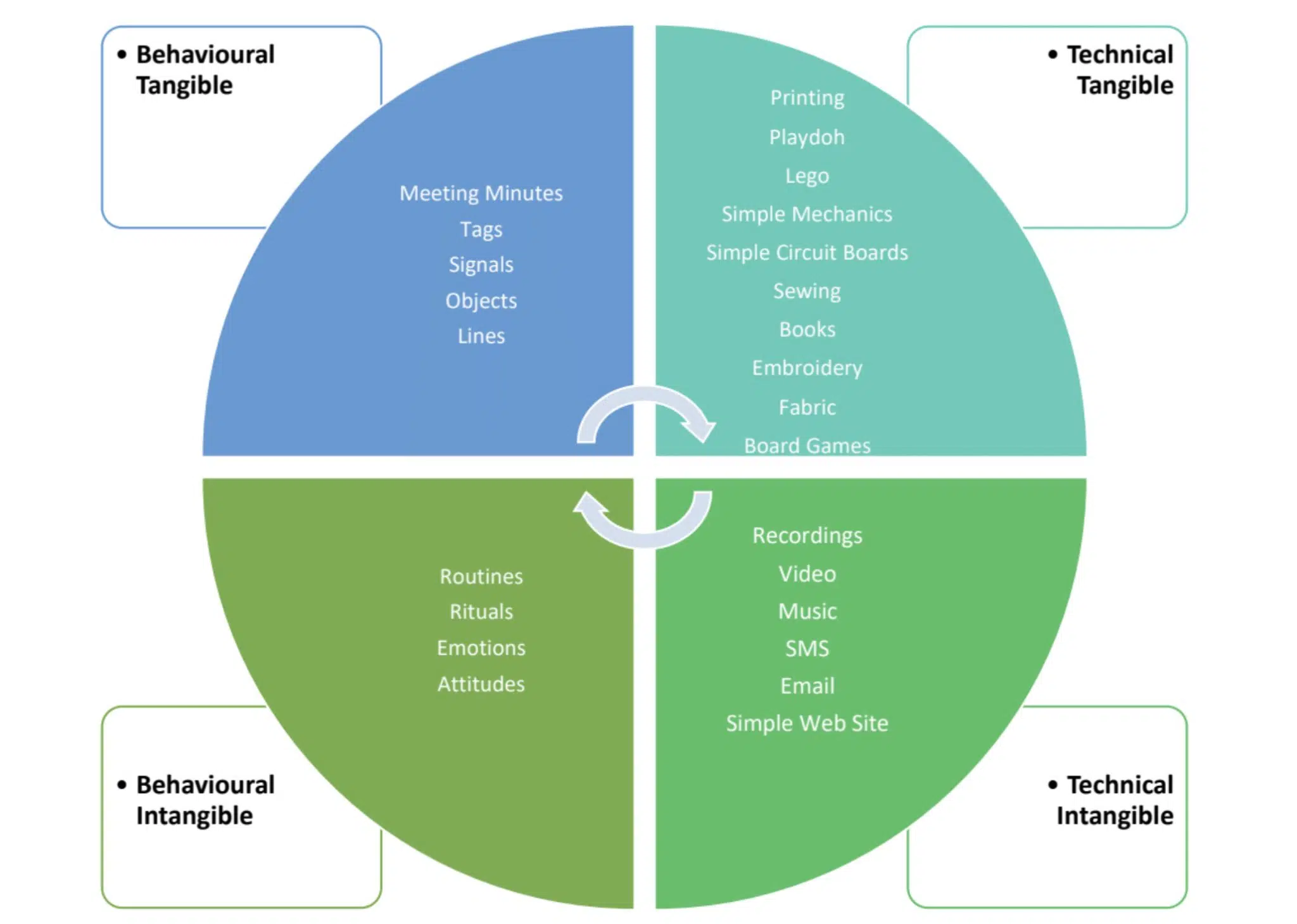
By Fernanda Arreola (ESSCA) and Pierre Daems (Aube Conseil)
Fernanda Arreola and Pierre Daems explore how small, accessible changes can lead to significant impacts, while providing a practical framework for integrating low-tech innovation in modern businesses. But they begin with a reference to a very well-known world-changing event.
Do you know what was written on the Berlin Wall just before it was destroyed in 1989?
- “You can’t change the world, but you can change the facts
- If you change the facts, you change points of view
- … and if you change points of view, you can change the world.”
The destruction of the Berlin Wall …
- … was a significant fact.
- … It changed points of view on the relationship between citizens from the East and the West sides of the wall,
- … and it gave birth to other facts and contributed to profoundly changing points of view on Europe,
- … and it finally changed the world!
Could we say that the destruction of the Berlin Wall was a form of low-tech innovation?
To respond to such a question, we must provide answers to the following.
- Was it useful? Yes, indeed. It allowed families separated between the East and West to reunite after many years.
- Was it accessible to all? Yes. There was no need for powerful machines or big investments. Each citizen played their part with a sledgehammer or whatever they could find.
- Was it sustainable? Absolutely. It had an incredible social impact in the long term!
Low-tech innovation is not a new idea. It is the way in which humans find answers to commonly found issues. But, for reasons beyond our understanding, it is a way of thinking that has almost vanished from the solution-making frameworks of firms. Today, companies find that they must address big challenges with large changes and high technological investment. However, this approach is very resource-consuming, as it requires time, human resources, and money. Furthermore, employees may become disengaged when they perceive that these changes are irrelevant to their daily jobs and are not concerned with their competencies.
However, as in ancient times, simple solutions can sometimes have a significant impact on employee and customer experiences. And these first facts change points of view (“we can do it!”), which will help to implement the next facts, and so on … up to the big change that everybody expected in the organisation. For example, one of the authors worked with a large hospital in France where employees, such as nurses and caregivers, often felt frustrated due to the lack of tools and conditions to provide better patient experiences. While significant investments were made in new equipment and renovations, employees remained frustrated because essential needs, such as providing water to patients in the waiting room, were neglected. Here comes low-tech innovation! Simple initiatives, such as encouraging patients to bring their water bottles or installing a tap and a sink in the corridor, can address these issues effectively. These initiatives empower employees and make them less frustrated, fostering a culture of innovation and problem-solving.
To implement low-tech innovation in your company, you can follow these four steps:
- Engage Employees: Encourage employees to identify areas for improvement in customer and employee experiences.
- Identify Low-Hanging Fruit: Focus on simple initiatives that require minimal effort and resources but have a significant impact.
- Ensure Sustainability: Emphasise the importance of initiatives that are sustainable and have a positive social and environmental impact.
- Share Innovations: Foster a culture of innovation by sharing low-tech innovation initiatives within your organisation.
To facilitate the identification of low-tech innovation initiatives, we have created a Low-Tech Innovation Typology (see figure 1). This typology categorises low-tech innovation into four classifications, enabling organisations to leverage internal resources and create easily identifiable forms of low-tech innovation.

Behavioural Tangible Innovation: the word “behavioural” helps describe human reactions to affect the psychological and social responses. This includes meeting minutes, tags, signals (giving directions, changing conduct), objects (cartons, figurines, marketing materials), and lines (queueing, waiting, organising groups). Examples include making new signs to show directions to a specific destination or giving tags with students’ names to personalise interactions.
Technical Tangible Innovation: the word “technical” helps describe the fact that an art, craft, technique, or simple mechanical, electrical, and digital tools are used to deliver this type of innovation. This type of innovation therefore involves items such as glue or tape, bricks (of the type used in construction, or smaller-scale ones such as Lego), simple mechanisms (poles, gears, magnets), simple circuits, sewing, books, or fabric (embroidery, clothes). Examples include creating models to facilitate the visualisation of a project or changing electrical equipment (for example, bulbs) to make it environmentally respectful. It could also be using simple soap instead of using a liquid soap dispenser.
Behavioural Intangible Innovation: these innovations include human actions encouraged by power, repetition, or training. These include rituals, routines, attitudes, and emotions. A simple example is asking employees to make customers smile when arriving in a store.
Technical Intangible Innovation: intangible technical innovations include all those technologies that we cannot touch. These include recordings, videos, music, SMS, emails, and simple websites and applications. An example is a simple website with information for new employees at a firm.
The best way to use this framework would be to identify real examples of what has been done by your organisation in the past month that could be identified as low-tech innovation in the four different categories and to demonstrate that it was:
- useful for your customers and employees,
- accessible (implemented by your teams with limited resources and time),
- sustainable (social and / or environmental impact)
These operational examples could then be part of your four-step culture change programme, to inspire your teams to change facts, … change points of view, … and change the world!




